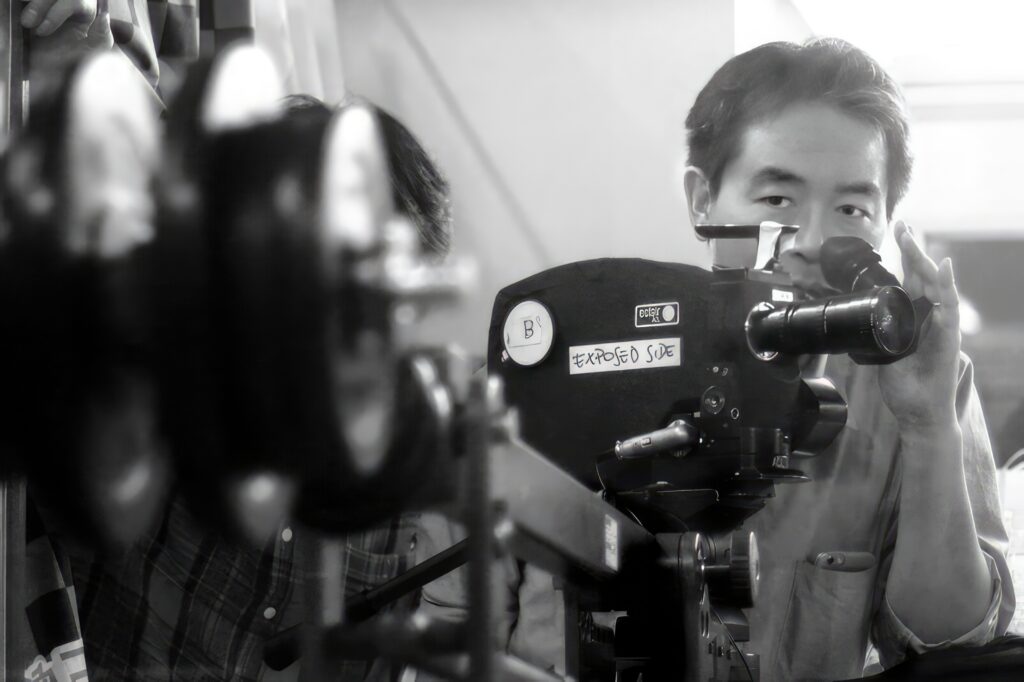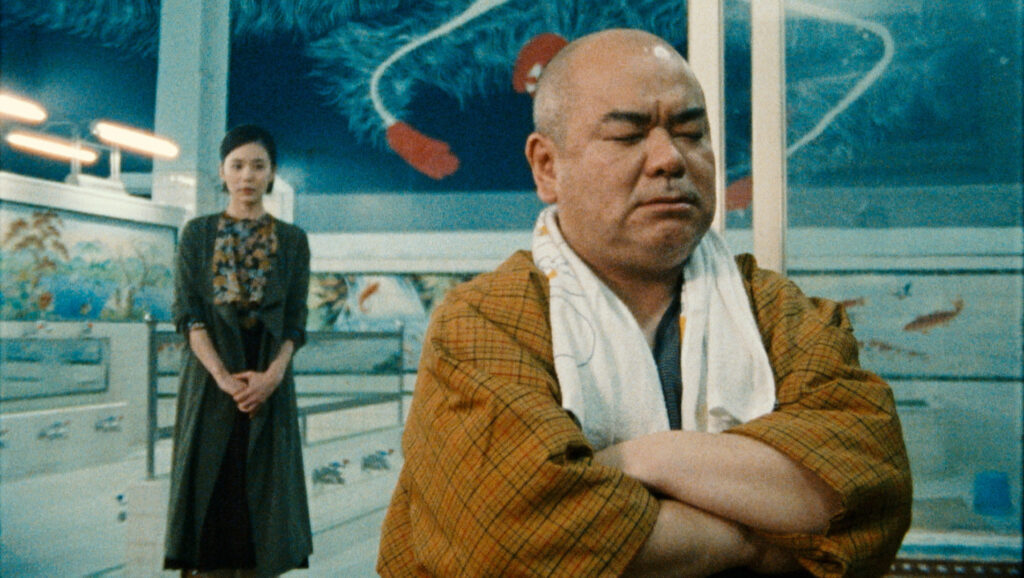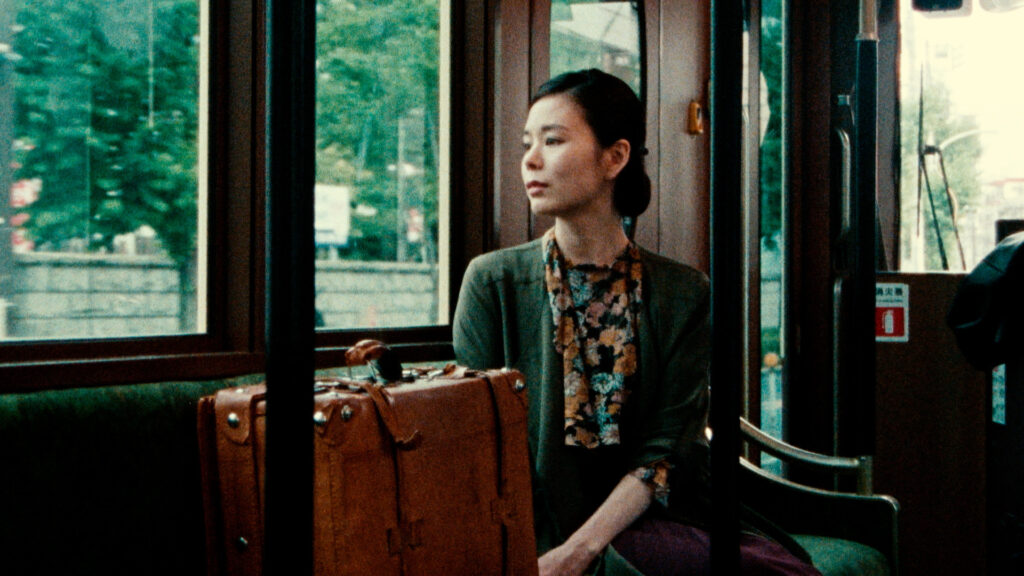
Film director Yusuke Ishide shares with us his remarkable journey from business administration to filmmaking, driven by a passion for animation and cinema. “The Master of Sento,” his fourth short film, emerges as a unique blend of authentic Japanese culture and timeless themes of marriage and forgiveness, set in a traditional public bathhouse. Ishide’s preference for the 16mm film format, despite the digital age, adds a touch of surrealism to his work, bridging past and present.
Can you tell us about your background in both business administration and animation? How did these seemingly different fields influence your approach to filmmaking? What inspired you to transition into the world of filmmaking?
I had to decide my career path when I graduated from high school. I was good at drawing, so I wanted to be an animator. However, my parents were worried about my choice. The next thing I was interested in was economics and business administration, so I went on to university to study those fields.
However, I couldn’t give up my dream of becoming an animator, so while attending college during the day, I worked part-time at night and saved money to go to animation school. Just around that time, I discovered that there was an 8mm film club at the university. I also loved movies, so I joined because the membership fee didn’t cost much. I immediately immersed myself in 8mm film cameras and video cameras. After saving enough money, I did enroll into an animation school, but encountered the harsh reality of not being able to make a living out of the low salary that a Japanese animation production company could offer, so I gave up my dream.
After that, I experienced various jobs, and now I continue to make short films while managing a post office as postmaster. The fact that my characters and my style are a little cartoony may be influenced by my past of being fond of animation.
“The Master of Sento” is your fourth short film. Can you share the inspiration behind the story and why you chose to explore the relationship of a married couple in the setting of an old public bath? How did you discover the shooting location, and why did you feel it was the perfect backdrop for your story?
Let me explain in order, the events that led up to the production of this film. The first thing was an encounter with a key person; when I was helping out with a certain film, I met Mr. Ichimura, who wrote the script for that film. I had an idea of a situation where drunk men are having a silly discussion, and I thought I’d like to ask him to write the script for my next film. Actually, Mr. Ichimura was juggling two jobs, writing scripts and managing a public bath that he inherited from his parents. When I visited the public bath, I felt intuitively that everything fell perfectly in place. Now, what do the characters discuss? In a public bath, baths are separated between male and female. I felt that it was a good setting to discuss relationships between men and women from the perspective of each gender.
By the way, the place where they are discussing is the men’s bath. However, we needed more than a mere discussion to make it into a movie. We had to create events that cause some kind of tension. So, we came up with the idea that he had a fight with his wife who left but came back. There is a Japanese phrase that literally means “wash away with water,” in the sense of “forgive and forget.” The wife decides to clear out the bad feelings in her mind and body, and “washes away the fight with water.” And, of course, the last scene takes place in the women’s bath. The protagonist, the old-fashioned and stubborn bathhouse master, is a complex character dealing with personal struggles.

How did you approach the character development for him, and what did you want to convey through his journey?
The Tokyo locals, especially those from the old town areas, are familiarly known as “Edokko.” They are short-tempered, compassionate, friendly, and shy. Hirotaka Inage, who played the main character, is from the old town of Asakusa and was just perfect for the role. I thought it would be interesting to see an “Edokko” like him worrying about problems with women. The cause is alcohol. He’s probably the type who reflects, but doesn’t regret. Maybe it’s his wife who will be tested.
The choice of using the 16mm film format is a distinctive feature of your filmmaking style. What draws you to this format, and how do you believe it enhances the visual and emotional aspects of your films? Is it challenging to use an analog format today when everything is digital?
I prefer movies to be in a world that is a little far from reality. Actually, the era setting of this movie is ambiguous. It is set in the range from the 70s to the present. The same goes for all the themes, dialogues, costumes and small props. It looks as if time has stopped only in this place, and at the same time, I took care to make it look like it is happening now.
When you stand in historical places and buildings, you often feel that way. It’s an immutable world. In order to express that world, I felt that the digital camera image was too close to reality, and it was not suitable for the expression of such a time-transcending world.
I was convinced that it could be expressed through film footage. And among various types of film, the 16mm film that can project a nostalgic feel to the footage itself was perfect. The 16mm film is a bridge between the present and the past. However, it costs more than digital.
With the budget this time, 20 minutes was the limit. In addition, in recent years, three labs in Japan have stopped developing film, leaving only one lab that still develops film. Fujifilm has stopped producing film! Movie production with film is narrowing year by year.
“The Master of Sento” delves into themes of marriage, separation, and human connection. Could you discuss the significance of these themes in the context of the story and the messages you aimed to convey?
When a person exposes their worst side, I think the decisive factor for a marriage to last depends upon forgiveness from the personʼs partner. The characters appearing here all have their own unique backgrounds in their marriage.
But it’s different for each couple, and doesn’t necessarily apply to the main character. It was during the cooldown period that the wife couldn’t stand her husband anymore and left the house.
When the wife comes back, she has a divorce paper in her hands, but she is still wearing a wedding ring. What made the wife’s wavering heart decide to shake her head is that he made a bath for the wife so she can relieve her fatigue, coming back after all the commotion.
Although she was wishing for her husband to be considerate towards her, the husbandʼs act of making a bath for her wasnʼt the reason why she forgave him. At that moment, she inadvertently turned merciful. There is no logic here. It may be that while being fed up with her husband, she still had feelings for him without noticing it herself.

The film explores the interaction between the protagonist and his nosy neighbors who encourage him to reconcile with his wife. Could you talk about the dynamics between these characters and how they contribute to the film’s narrative?
The composition of this movie is very unique. In ordinary cases, the story would progress through the coupleʼs own conversations and actions, which would lead to the outcome of their relationship.
However, in this case, the story develops through the conversations of the three nosy neighbors who have nothing to do with the situation. Moreover, the neighborsʼ opinions are all in parallel and it seems they will never be able to see each otherʼs standpoints.
In the meantime, the poor master of the bathhouse keeps his eyes closed and remains silent. The neighbors are giving advice out of kindness, but eventually, behind their advice, the master will understand that their family situations are not going well. While listening to the three men’s arguments, the master realizes that their advice lacks compassion for their families.
With his utmost bravado, the master chases off the three noisy men, and gives the husband an opportunity to take action to welcome his wife back. Those who have shrewd intuition may notice what these three men mean to the main character.
Why are the neighbors meddling with him so much? They are his friends, and they may be the type of people you sometimes see in the common people’s neighborhood. Why does the main character remain silent? Of course, it may be because heʼs the quiet type.
The argument between the three men heats up and accelerates the rhythm of the movie, and after the situation reaches its climax and the main character bursts out in anger, the scene abruptly changes to a quiet public bath, leading into a series of odd scene transitions.
The number of tea bowls when drinking tea. The design of the tram when his wife got on and when she got off. And so on. In the same manner as Double Image’s trick art that implies the possibility of another story, maybe those three men are contributing to the story in different ways.

As a director, what challenges did you encounter during the production of “The Master of Sento,” and how did you overcome them to bring your vision to life?
What I struggled with this piece was casting. First, after confirming that I could shoot in this public bath, the next thing I started working on was the script and casting. I wasn’t interested in casting celebrities that everyone knew all over Japan. As criteria, first of all, they needed to be people likely to be seen in a public bath in Tokyoʼs old town. Secondly, people with faces that naturally suit analog film. Thirdly, the role of the wife needed to be not only a beautiful person, but also a skilled actress who could express complicated feelings, present herself as a charming character loved by everyone, and also exude a sense of dignity, all within the short timeframe of the movie.
I don’t like auditions. I go to see plays and movies, go to meet them in person, talk to them, and decide. Even if theyʼre not professional actors, if they seem perfect for the role, Iʼd make an offer without hesitation. But it was really difficult to find the right actors for the entire cast this time. I managed to find the perfect cast thanks to friends introducing me to actors and through personal connections I had built up so far. By the way, the role for the master of the public bath who I finally found was a friend at work who had no acting experience!
How do you see your filmmaking style evolving in the future? Are there any specific genres or themes you’re eager to explore in your upcoming works?
Perhaps even if my artistic style becomes established and recognized worldwide, and the scale of production increases, I will continue to depict Japanese people. Because in 100 years, the Japanese may be designated as an endangered species. Also, I’m still exploring, but I’m interested in time and space. For example, the public bath that this film is set in is actually nearly 100 years old. It would be interesting to create 20 minutes that reproduce the decorations and costumes of that time with the same cast. At that time, Japan was relatively peaceful, but it was just after the economy slowed down, a huge earthquake occurred, and the Spanish flu pandemic ended. In a similar situation as now, how were the common people coping? I think people can have an interesting experience watching a movie like that.
“The Master of Sento” has a distinct Japanese cultural and historical setting. How do you balance maintaining the authenticity of this setting while making the film accessible to international audiences?
I researched what kind of knowledge people from all over the world had gained upon visiting Japan. A fair amount of them had a general understanding of the public bath culture, or had a vague image of it. I still had some concern, but I decided to tell the story on the premise of delivering an authentic experience. The thing I was careful about was that the story, theme and the feelings of the characters could be understood all over the world. There is only one description that may cause a misunderstanding. Nowadays, public baths have ceased to make the water mellow.
What films and filmmakers inspire you the most?
There are plenty enough that I can’t choose!
Lastly, what advice would you give to aspiring filmmakers who wish to create unique and compelling stories on screen?
I think it’s important to watch old and new movies from all over the world and continue to verify that your style doesnʼt mimic any of them. At the same time, I think it’s important to look up your favorite foreign movies one cut at a time and analyze the process of how you fell in love with them. Even though the country and the circumstances are completely different, thereʼs got to be a reason as to why those movies leaved an impression and fascinated you.
